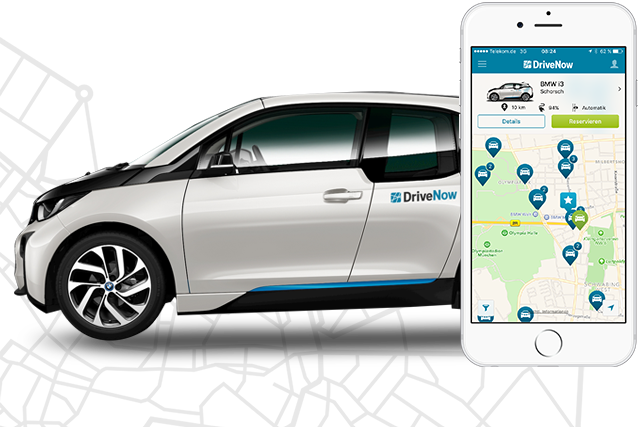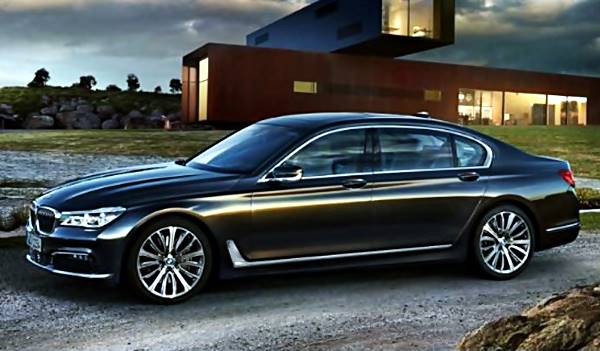
Johannes Seibert, Managing Director of BMW Group Middle East
The automotive industry today is on the verge of undergoing radical change, transforming car makers into mobility providers. The evolution over the next decade is expected to be more significant than ever before. At BMW, we believe that connectivity will become increasingly important and new technologies will emerge, which is where we see new opportunities for premium mobility. We already look at it in the broader context of people’s lives and develop a series of customised solutions that make mobile life safer, simpler and more convenient.
As a leading automotive manufacturer, we are conducting extensive research into mobility and addressing any points we discover to do just that. Our objective is clear: to be the technology and innovation leader for individual mobility in the digital age.
Autonomous Driving
One of the ways we are doing this is through autonomous driving, or automated driving as we call it. Automated driving is probably one of the most complex and complicated trends we are seeing in the automotive industry today. Especially due to its dependency on the legal frameworks country by country.
Technically, many things are already possible: we already have self-driving cars in our R&D centre in Munich. They can move around in controlled environment, look for free parking lots and park themselves, without any human being in the car. However, not everything that is technically possible, can be implemented on public roads at this point of time. The available technology has advanced faster than the relevant legislation in most countries.
We incorporated automated technologies into our new BMW 7 Series as far as they are compatible with legislation, however we call them assistants, not autopilot. To make it clear to our customers that – at this point of time – the driver remains in charge of the vehicle operation, even though he or she can take their feet off the pedals and hands from the steering wheel for a certain period.
There are a few other automated technologies that can already be experienced in a BMW today:
Driving Assistant Plus – this uses a combination of stereo cameras and radar sensors meaning that the 5 and 7 Series can steer itself by recognizing the lines on the road, speed up or slow in conjunction with the car ahead, and stop and go on its own with Traffic Jam Assistant
Remote Control Parking – when a driver is outside the car, by simply pressing a button on the display key, the 7 Series steers itself into a garage or a parking space, even if it is narrow
Gesture Control – which is supported by a 3D sensor – reads hand gestures from the driver or front passenger. Simply swipe to the right to decline phone calls, point with one finger to accept, and draw a circle with your index finger to increase or decrease the volume of the stereo, without touching any button or screen
Automated technologies have become so widespread that it’s no longer a question of if but when. BMW Group is collaborating with Intel and Mobileye to develop the technologies that will make fully automated driving a reality within five years. While we work to mature the technology for fully autonomous driving and ensure key challenges such as security and passenger safety are overcome, we also need a clear legal framework to accompany its introduction. We are working with the local authorities to facilitate this.
Connectivity
Another way we are striving to be an innovation leader for individual mobility is through connectivity. This includes the interlinkage between car and driver and the driver’s mobile devices, between the car and its surrounding infrastructure, and among the vehicles on the road. Several services to enhance convenience and safety are already in place, through BMW ConnectedDrive in the new BMW 7 Series and a lot of other models. For example:
Through the BMW remote app you can lock or unlock your car, turn on the air-conditioning before you get to the car, check the charging status of the battery (if it is an electrical vehicle) or flash the headlights and sound the horn for example when you need to find your car in a big parking area
The Intelligent Emergency Call connects you to a BMW Call Centre or even automatically and directly to Dubai Police when necessary. For example when the airbag is deployed, ConnectedDrive collects relevant data like location and number of passengers, and dispatches it automatically
BMW Teleservices schedules a service appointment when it is due, and transmits the relevant data to the BMW Service Partner; and the BMW concierge can send directions straight to your navigation system, make hotel bookings, answer questions and so on
Further development regarding connectivity does not stand still; we are constantly developing and refining it. The new BMW 5 Series that has been recently launch, is already be able to communicate with other BMWs, sharing information such as traffic and weather updates. It can be ordered with a Head-Up-Display, which reflects the most important data such as speed, speed limits or navigation information within the field of vision on the front windscreen.
Taking this even further, at the Consumer Electronics Show in Las Vegas last year we presented the vision car “BMW i Vision Future Interaction”. This is a glimpse of how dashboards and Head-Up-Displays of the future may look with high-resolution vehicle displays whose content adjusts to match the situation; function control with gestures, touch-sensitive surfaces and voice control.
At the Auto Shanghai 2015, MINI revealed its vision for connectivity between augmented reality (AR) eyewear and the car. The MINI Augmented Vision project thereby embraces one of the major trends of the future: AR technologies enhance reality by overlaying the field of vision with supplementary digital information, usually by means of computer generated graphics. And the real and virtual worlds are set to merge more and more in the future while driving as well.
Car Sharing
Finally, the third area that we will see more of over the next five years is car sharing. One of the most remarkable developments currently is the rapid growth and evolution of the sharing economy. Today, people can rent everything from luxury handbags to high-end homes. And also cars. This is something that BMW Group has been involved with for some time.
An example of this is DriveNow. We partnered with Sixt in 2011 to introduce a car-sharing service where customers can rent and return BMW and MINI vehicles from any pick up and return point without prior booking. Rental is charged by the minute; parking and fuel charges are also included.

Counting well over 600,000 customers and a fleet of some 4,500 vehicles, DriveNow ranks as one of the biggest car sharing companies in the world. It operates in eleven cities: five German locations – Berlin, Hamburg, Munich, Düsseldorf and Cologne – as well as London, Vienna, Copenhagen, Stockholm, Brussels and Milan. In Germany, DriveNow records an average of over half a million journeys every month.
DriveNow incorporates another key trend we have seen this year – electrification. The number of plug-in electric cars on the world’s roads is set to pass the threshold of 2 million vehicles by the end of this year, with industry commentators saying the electric car revolution is finally here.
Electric vehicles were first introduced into the DriveNow fleet in summer 2013 and today, it offers electric BMW i3 vehicles in almost all the eleven cities. Twenty percent of the entire fleet is electrically powered and over 150,000 customers had their first electric driving experience thanks to DriveNow, with its BMW i3s having covered more than three million kilometres in total. In a unique development, Copenhagen offers an all-electric fleet, where customers have access to 400 brand new BMW i3s.
Meanwhile, BMW Group recently launched a free-floating premium car sharing service in North America, called ReachNow, to build on the successful European DriveNow model. It piloted the project in Seattle in April this year due to the city’s interest in welcoming greener mobility services that make life easier for its residents. Additionally, Seattle was recently ranked the third most electric vehicle-friendly city in the US by ChargePoint, the largest electric vehicle charging network.
Just under eight months after launch, 32,000 members and more than 1.2million miles later, ReachNow operates in three cities: Seattle, Portland and most recently Brooklyn, with additional North American locations planned for 2017.
Furthermore, ReachNow will pilot four new mobility services in select cities over the next couple of months:
- Ride – a service like Uber and Careem where customers can order a driver as well as schedule individual and recurring rides in a ReachNow BMW vehicle
- Fleet Solutions – where residential members will have exclusive use of a full fleet of premium and sustainable BMW i3 electric vehicles and 3 Series that remain onsite at select apartment buildings or complexes
- Reserve – for ReachNow members who want to use the vehicles for longer trips lasting 2-5 days. They can request a specific vehicle to be delivered at their preferred time and location
- And Share – for MINI owners who want to make their car work for them in times they don’t use it and partially recoup the cost of ownership by renting out their vehicle via ReachNow
So, where next? We are very curiously observing the local dynamics around the world, including in Dubai. The RTA has expressed interest so we believe car-sharing will come to this city, and region, one day and we’ll be ready for it when it does.
Designed for Driving Pleasure
The BMW Group sees the changes sweeping across the world of mobility through digitalization as an excellent opportunity to make mobile life safer, simpler and more convenient. With the industry ever-changing and new technology evolving, it is inevitable that there will be some hiccups along the way. But in the long run, when automated cars are connected to each other and their surroundings, we are convinced that these technologies will lead not only to more comfort and efficiency, but also to a tremendous increase of safety. We know that our customers wish to have the choice, depending on the situation, whether they want to be in control, or if they want the car to take over and this opens fascinating possibilities. The changes that we’ll see within the next 10-20 years in our industry will likely be more dynamic, more radical, and more disruptive, than in over 100 years of automotive history before.
Latest Business
Intelligence Report














